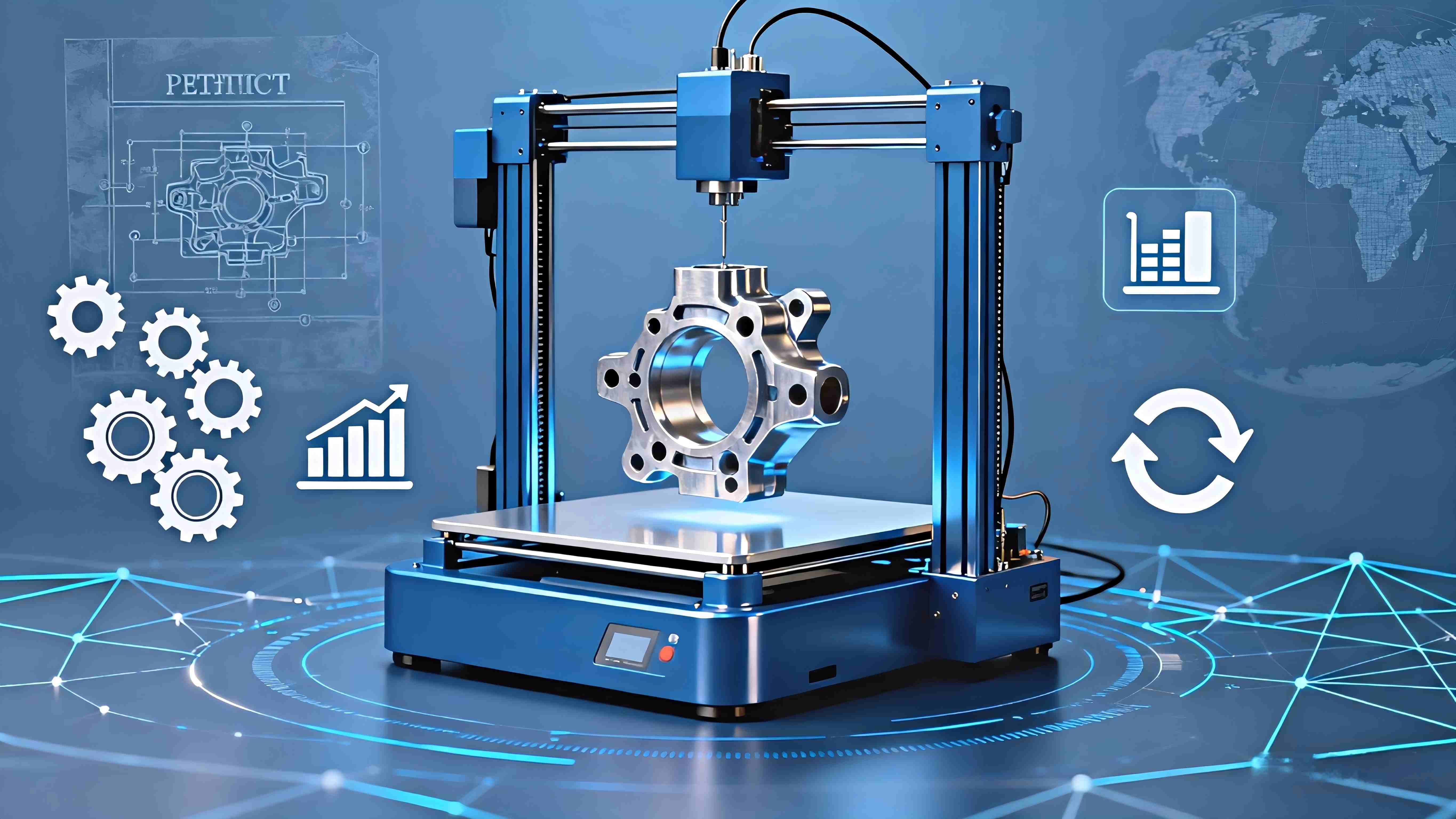Global Industrial Components Industry Reshaped by Policy, Tech, and Supply Chain Shifts in 2025
Home News Industry news
Global Industrial Components Industry Undergoes Restructuring: Policy Guidance, Technological Innovation, and Supply Chain Adjustment as Core Drivers
Since 2025, driven by a new round of technological revolution and industrial transformation, the global industrial components industry has exhibited distinct characteristics of strengthened policy orientation, accelerated technological innovation, and reshaped supply chain dynamics. As the core foundation of manufacturing, the global market size of this industry is expected to exceed $1.8 trillion this year. China, contributing nearly 35%, has become a key variable influencing the global industrial trend, with new energy, intelligence, and regional layout emerging as the core drivers of industrial upgrading.
Policy and Market Dual-Driven, Regional Layout Takes New Shape
Major economies worldwide have introduced industrial policies to guide the industrial components industry toward high-endization and localization. Europe and the United States have promoted the local production of key components through special subsidy bills to enhance supply chain autonomy and controllability. China, centered on the "intelligent transformation and digital upgrading" strategy, has driven sustained growth in demand for industrial automation components, with a year-on-year growth rate of 12.3% in related fields in 2025.
Adjustments in the regional trade pattern have further intensified supply chain fragmentation. In 2025, the EU’s Carbon Border Adjustment Mechanism (CBAM) officially covered industrial forgings and castings, increasing the average cost of Chinese export enterprises by 8%-12% and forcing enterprises to accelerate green transformation and optimize regional layout. Against this backdrop, Southeast Asia has become an important destination for the transfer of mid-to-low-end components, with Vietnam’s fastener export volume achieving a three-year compound annual growth rate of 19%. Driven by the "nearshoring" policy, the North American market has seen Mexico’s auto parts exports to the United States increase by 23% compared to 2023, and the synergy of regional supply chains has gradually emerged.
New Energy and Intelligence Lead, Industrial Structure Accelerates Iteration
The explosive growth of the new energy vehicle (NEV) industry has become the largest growth driver for the industrial components industry. In 2025, the global market share of NEV components has risen to 28%. China has performed prominently in areas such as battery structural parts and lightweight components, accounting for over 50% of global production capacity, and has reshaped the global supply chain pattern with its full industrial chain advantages. Demand for core components of traditional fuel vehicles, such as engines and gearboxes, has shrunk, while demand for new energy core components (e.g., batteries, motors, electronic control systems) and intelligent components (e.g., smart cockpits, lidar) has surged, driving the restructuring of industrial chain value.
Intelligent transformation is breaking traditional industrial boundaries. The trend of "software-defined vehicles" is promoting the upgrading of the components industry from mechanical manufacturing to mechatronics and the integration of software and hardware. Automotive chassis is transforming from traditional mechanical components to electronically controlled integrated products, with domain controllers and central computing units becoming core configurations. This requires component enterprises to possess stronger software R&D and system integration capabilities. This transformation has brought development opportunities for emerging Chinese suppliers: Konghui Technology and Baolong Technology have rapidly risen in the air suspension field, while Horizon Robotics and Hesai Technology have made breakthroughs in intelligent driving-related components, breaking the long-term monopoly of multinational enterprises.

Technological Innovation and Standard Competition Go Hand in Hand, Strong Momentum for Industrial Upgrading
Material innovation and manufacturing process reform have become important supports for industrial upgrading. In 2025, the global penetration rate of composite materials in industrial components has increased to 18%. China accounts for 26% of global patents in niche areas such as carbon fiber-wound gas cylinders, gradually converting technological advantages into industrial competitiveness. The application scale of 3D printing technology in the aerospace field has exceeded $7 billion. Although traditional machining still accounts for over 85% of mass production scenarios, additive manufacturing’s advantages in producing complex structural components have become increasingly prominent.
Import substitution and standard competition in high-end components are heating up simultaneously. High-end products such as industrial robot joint reducers and servo systems are still dominated by Japanese and German enterprises, but Chinese local enterprises have achieved breakthroughs through technological research, reaching a 15% import substitution rate in harmonic reducers. International standardization competition has become increasingly fierce: the International Organization for Standardization (ISO) has added 11 new industrial component interconnection protocols, and group standards led by China have achieved technological output in the field of modular interfaces for flexible production lines, enhancing China’s voice in global industrial rule-making.

Business Model Innovation, Diversified Expansion of Enterprise Competition Dimensions
Facing industrial transformation and market competition, leading enterprises have actively explored business model innovation. The "hardware subscription + data service" model has been gradually promoted, increasing customer retention rate to 82%. Enterprise competition has shifted from single product quality and price competition to multi-dimensional competition including technological R&D, rapid response, and full-life-cycle services. Multinational suppliers are facing transformation pressures: some enterprises have lowered their performance expectations and launched layoff plans due to failing to keep up with the pace of electrification and intelligent transformation. In contrast, Chinese enterprises have continued to increase their global market share with their flexible market response capabilities and sustained R&D investment.
Industry insiders point out that the global industrial components industry will show trends of "high-end competition, regional layout, green transformation, and intelligent upgrading" in the future. Enterprises need to focus on core technological breakthroughs, optimize global supply chain layout, and adapt to dual changes in policies and markets to seize opportunities in industrial restructuring. As the world’s largest market and an important production base, China’s technological innovation and industrial upgrading will continue to inject new momentum into the development of the global industrial components industry.
Share:
Subscribe for our latest Updates
Stay up to date with the latest news, announcement and articles.
- Contact Us
- Build 7, No. 500, Huapu Rd., Qingpu Dist., Shanghai, China
- +86-159-2111-5263
- sales@jillionsupply.com
- +86-159-2111-5263
- +86-159-2111-5263
- jillionsupply
- sales@jillionsupply.com
- +86-159-2111-5262
- +86-159-2111-5263
- +86-159-2111-5264
 EN
EN RU
RU

